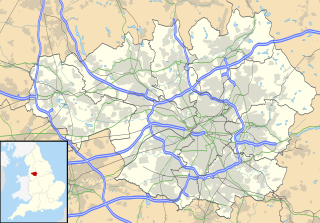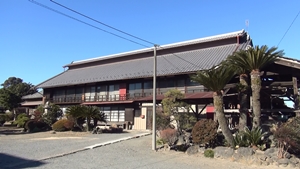 W
WSilk mill is a factory that makes silk for garments using a process called silk throwing. Traditionally, silk mills were concentrated in Japan, England, New Jersey, Pennsylvania and Switzerland.
 W
WBath Street Mill was a silk throwing mill in Derby, built in 1851 for George Holme. In spite of the recession in the silk industry in 1857, he expanded the mill in 1868. In 2008 plans were made to convert the mill into flats and offices, but the building was damaged beyond repair by a fire in June 2009, and later demolished.
 W
WDerby Silk Mill, formerly known as Derby Industrial Museum, is a museum of industry and history in Derby, England. The museum is located on the former site of Lombe's Mill, a historic silk mill which marks the southern end of the Derwent Valley Mills World Heritage Site. The site opened as Derby’s Industrial Museum, on 29 November 1974. A £17 million redevelopment scheme started in 2016, and the museum reopened under the new name of the Museum of Making on 21 May 2021.
 W
WDerwent Valley Mills is a World Heritage Site along the River Derwent in Derbyshire, England, designated in December 2001. It is administered by the Derwent Valley Mills Partnership. The modern factory, or 'mill', system was born here in the 18th century to accommodate the new technology for spinning cotton developed by Richard Arkwright. With advancements in technology, it became possible to produce cotton continuously. The system was adopted throughout the valley, and later spread so that by 1788 there were over 200 Arkwright-type mills in Britain. Arkwright's inventions and system of organising labour was exported to Europe and the United States.
 W
WHavelock Mills in central Manchester were built between 1820 and 1840. It was probably the largest surviving silk mill in the north-west region in the 1970s and had a unique combination of silk and cotton mills on one site. It was a landmark on the Rochdale Canal, overlooking Tib Lock, one of the Rochdale Nine.
 W
WLister's Mill was the largest silk factory in the world. It is located in the Manningham district of Bradford, West Yorkshire, England and was built by Samuel Cunliffe Lister to replace the original Manningham Mills that were destroyed by fire in 1871. The mill is a Grade II* listed building, built in the Italianate style of Victorian architecture.
 W
WLombe's Mill was the first successful silk throwing mill in Britain. It was built on an island on the River Derwent in Derby. It was built after John Lombe visited Piedmont in 1717 and returned to England with details of the Italian silk throwing machines – the filatoio and the torcitoio – and some Italian craftsmen. The architect was George Sorocold. At its height, the mill employed some 300 people.
 W
WThe Shinmachi Spinning Mill was a government-run model factory and model town located in what is now part of the city of Takasaki, Gunma Prefecture, Japan. The site has been protected by the central government as a National Historic Site since 2015.
 W
WThe South Manchester Railroad was a short-line railroad, operating in Manchester, Connecticut. It was in operation from 1869 to the 1980s.
 W
WThe Tajima Yahei Sericulture Farm is located in the Sakaishima neighbored of the city of Isesaki, Gunma. It was the former home of an influential silk farmer in the early Meiji period, known for writing a new sericulture theory which laid the foundations for modern sericultural production. The building has been protected as a National Historic Site since 2012. It was subsequently included as part of The Tomioka Silk Mill and Related Industrial Heritage UNESCO World Heritage Site in 2013.
 W
WThe Tomioka Silk Mill and Related Industrial Heritage is a grouping of sites that relate to the industrialization of Japan in the Meiji period, part of the industrial heritage of Japan. The Tomioka silk mill was constructed in 1872 in Gunma Prefecture, which became a leading centre for sericulture, the rearing of silkworms and production of raw silk. In 2007 the monuments were submitted jointly for inscription on the UNESCO World Heritage List under criteria ii, iv, and v. Ten component sites have been proposed. Four sites were retained in Tomioka Silk Mill and Related Sites in 2014:Tomioka Silk Mill Tajima Yahei Sericulture Farm Takayama-sha Sericulture School Arafune Cold Storage
 W
WTomioka Silk Mill is Japan's oldest modern model silk reeling factory, established in 1872 by the government to introduce modern machine silk reeling from France and spread its technology in Japan. The factory is designated by the government as a National Historic Site and all its buildings are preserved in very good condition. It is located in the city of Tomioka, Gunma Prefecture, Japan, about 100 km northwest of Tokyo.
 W
WWhitchurch Silk Mill is a watermill on the River Test, located in the town of Whitchurch, Hampshire, England. It is a Grade II* listed building